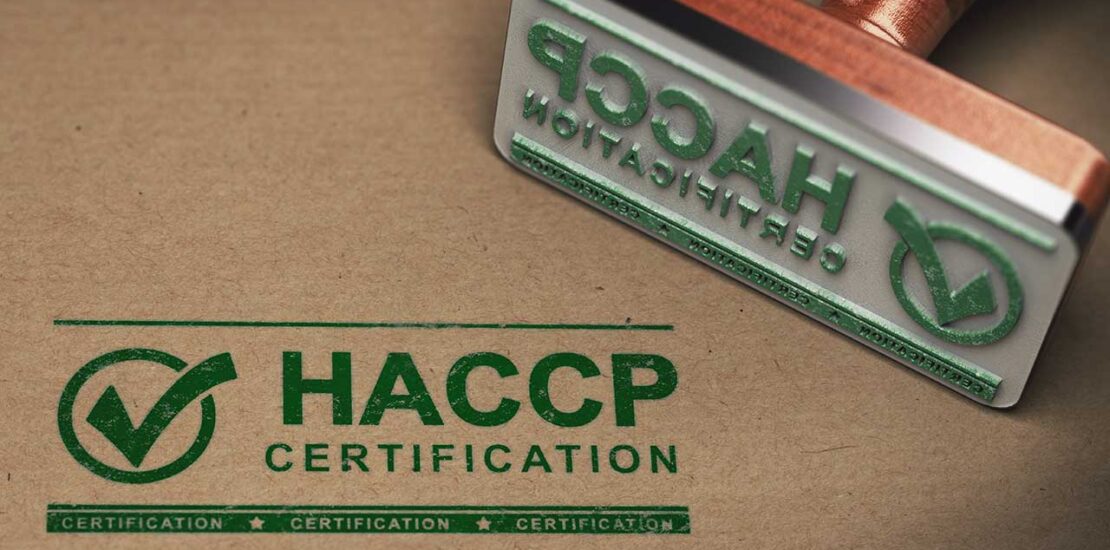Efficient Supply Chain: Transforming Food Distribution with Technology
The efficient supply chain is the backbone of food distribution, and technological advancements have significantly transformed the way products are sourced, processed, and delivered. By leveraging innovative technologies, businesses can streamline operations, enhance visibility, and improve overall efficiency. In this section, we will explore how technology is revolutionizing the efficient supply chain in food distribution.
- Automated Inventory Management: Automated inventory management systems have revolutionized supply chain operations. With the help of barcode scanning, RFID technology, and real-time data integration, businesses can accurately track inventory levels, optimize stock replenishment, and reduce waste. Automated systems improve inventory accuracy, streamline order fulfillment, and minimize the risk of stockouts or overstocking.
- Data Analytics and Predictive Analytics: Data analytics plays a pivotal role in optimizing supply chain efficiency. By leveraging big data and advanced analytics tools, businesses gain valuable insights into demand patterns, consumer preferences, and market trends. Predictive analytics enables accurate demand forecasting, inventory optimization, and proactive decision-making. Data-driven insights facilitate better planning, resource allocation, and risk management.
- Cloud-Based Collaboration: Cloud-based collaboration platforms have transformed supply chain collaboration and communication. These platforms enable real-time sharing of information, improved visibility across the supply chain, and seamless collaboration among stakeholders. Businesses can monitor and manage supply chain activities, track shipments, and collaborate with suppliers, distributors, and transportation partners effectively. Cloud-based solutions enhance coordination and streamline operations, leading to faster decision-making and improved efficiency.
- Robotics and Automation: Robotic automation has gained momentum in the food distribution industry. Autonomous robots can perform repetitive tasks such as picking, packing, and sorting with speed and precision. Automation technologies increase operational efficiency, reduce labor costs, and minimize errors in order fulfillment. Furthermore, collaborative robots (cobots) work alongside human workers, enhancing productivity and safety in distribution centers.
- Blockchain Technology for Transparency: Blockchain technology has emerged as a game-changer for supply chain transparency. By leveraging a decentralized and immutable ledger, businesses can enhance traceability, provenance, and transparency in the food distribution process. Blockchain ensures authenticity and visibility across the supply chain, enabling consumers to verify the origin, quality, and safety of the products they purchase. This technology fosters trust, reduces fraud, and enhances food safety.
Overall, technology has transformed the efficient supply chain in food distribution. By embracing automated inventory management, leveraging data analytics and predictive analytics, adopting cloud-based collaboration, incorporating robotics and automation, and harnessing the power of blockchain technology, businesses can optimize operations, improve visibility, and enhance overall efficiency. Embracing technological advancements is key to meeting the growing demands of the modern consumer and driving success in the food distribution industry.
Sustainable Practices: Nurturing the Environment in Food Distribution
Sustainability has become a critical focus in the food distribution industry as businesses strive to reduce their environmental footprint and contribute to a greener future. By implementing sustainable practices, such as reducing waste, minimizing energy consumption, and adopting eco-friendly packaging, food distributors can make a positive impact on the environment. In this section, we will explore how sustainable practices are nurturing the environment in food distribution.
- Waste Reduction and Food Recovery: Food waste is a significant environmental issue, and food distributors play a crucial role in minimizing waste throughout the distribution process. Implementing strategies such as improved inventory management, optimizing product rotation, and partnering with food recovery organizations can significantly reduce food waste. By diverting edible surplus food to those in need, food distributors can contribute to hunger relief while minimizing environmental impact.
- Energy Efficiency and Renewable Energy: Minimizing energy consumption and transitioning to renewable energy sources are key sustainability practices in food distribution. Businesses can implement energy-efficient technologies, such as LED lighting, energy management systems, and motion sensors, to reduce energy waste. Additionally, adopting renewable energy sources like solar or wind power for warehouse operations and transportation helps lower greenhouse gas emissions and decrease reliance on fossil fuels.
- Eco-Friendly Packaging: Packaging plays a significant role in the environmental impact of food distribution. Choosing eco-friendly packaging materials, such as biodegradable or compostable options, helps reduce waste and minimize the use of non-renewable resources. Additionally, lightweight packaging reduces transportation-related emissions, while innovative designs, such as reusable or recyclable packaging, promote a circular economy.
- Sustainable Transportation and Logistics: Sustainable transportation and logistics practices contribute to reducing the carbon footprint of food distribution. Businesses can optimize delivery routes, utilize fuel-efficient vehicles, and promote the use of alternative fuels like electric or hybrid vehicles. Consolidating shipments and employing last-mile delivery solutions, such as bicycle couriers or delivery drones, further minimize emissions and congestion.
- Collaboration and Supply Chain Transparency: Collaboration among stakeholders and supply chain transparency are vital for promoting sustainability in food distribution. By partnering with suppliers and customers who share sustainable values, businesses can collectively drive environmental initiatives. Transparent communication and sharing sustainability goals throughout the supply chain foster awareness and accountability, encouraging suppliers and partners to adopt sustainable practices as well.
Essentially, sustainable practices are nurturing the environment in food distribution. By reducing waste, minimizing energy consumption, adopting eco-friendly packaging, implementing sustainable transportation and logistics, and fostering collaboration and supply chain transparency, food distributors can make significant strides towards a greener future. Embracing sustainability not only reduces environmental impact but also enhances brand reputation, attracts environmentally conscious consumers, and contributes to a more sustainable food industry.
HACCP Certification: Ensuring Food Safety and Quality in the Future of Distribution
Hazard Analysis and Critical Control Points (HACCP) certification is a vital aspect of ensuring food safety and quality in the distribution process. With the ever-increasing complexity of the global food supply chain, HACCP certification provides a systematic approach to identify, assess, and control potential hazards. In this section, we will explore the significance of HACCP certification in upholding food safety and quality in the future of distribution.
- Preventive Approach to Food Safety: HACCP certification adopts a preventive approach to food safety. Instead of relying solely on end-product testing, HACCP focuses on identifying potential hazards, implementing control measures, and monitoring critical control points (CCPs) throughout the distribution process. This proactive approach helps prevent foodborne illnesses and ensures that food products meet stringent safety standards.
- Risk Assessment and Hazard Control: HACCP certification requires businesses to conduct a thorough risk assessment and identify potential hazards specific to the distribution process. This includes factors such as temperature control, cross-contamination, packaging integrity, and allergen management. By understanding and documenting these hazards, businesses can implement appropriate control measures at critical control points (CCPs) to prevent, reduce, or eliminate risks.
- Compliance with Regulatory Standards: HACCP certification ensures compliance with regulatory standards and industry best practices. Regulatory bodies worldwide recognize HACCP as a robust and effective system for managing food safety. By attaining HACCP certification, food distributors demonstrate their commitment to upholding the highest standards of food safety and quality, building trust with customers and regulatory agencies alike.
- Continuous Monitoring and Improvement: HACCP certification emphasizes the importance of continuous monitoring and improvement. Regular inspections and audits by certified HACCP auditors help identify areas for improvement and verify compliance with established food safety protocols. By continuously monitoring critical control points, analyzing data, and updating procedures as needed, food distributors can enhance their food safety practices and ensure continuous improvement.
- Enhanced Consumer Confidence: HACCP certification enhances consumer confidence in the safety and quality of food products. In an era where consumers are increasingly concerned about food safety, having a robust food safety management system in place provides assurance that products are produced, handled, and distributed with the highest level of care. HACCP certification demonstrates a commitment to protecting consumer health and meeting their expectations for safe and high-quality food.
To summarize, HACCP certification plays a crucial role in ensuring food safety and quality in the future of distribution. By adopting a preventive approach, conducting risk assessments, implementing hazard controls, complying with regulatory standards, continuously monitoring and improving practices, and enhancing consumer confidence, HACCP certification helps food distributors uphold the highest standards of food safety. As the global food distribution landscape evolves, haccp certification Australia remains a cornerstone in ensuring the safety and quality of food products for consumers worldwide.
Last-Mile Delivery: Meeting the Demands of the Modern Consumer
Last-mile delivery refers to the final leg of the supply chain, where products are transported from a distribution center to the end consumer’s doorstep. With the rise of e-commerce and the increasing expectations of convenience, last-mile delivery has become a critical focus in the food distribution industry. In this section, we will explore the challenges and strategies associated with meeting the demands of the modern consumer through efficient last-mile delivery.
- Efficient Route Planning: Efficient route planning is essential to optimize last-mile delivery operations. By utilizing advanced algorithms and route optimization software, businesses can minimize distance traveled, reduce fuel consumption, and improve delivery efficiency. Smart route planning also takes into account factors like traffic patterns, delivery time windows, and customer preferences to ensure timely and reliable deliveries.
- Real-Time Tracking and Communication: Real-time tracking and communication play a vital role in providing transparency and ensuring customer satisfaction in last-mile delivery. By leveraging GPS tracking systems and mobile applications, businesses can provide customers with real-time updates on their delivery status. Effective communication channels, such as SMS alerts or automated notifications, keep customers informed about delivery timings and enable them to make necessary arrangements.
- Delivery Partner Collaboration: Collaboration with delivery partners, including third-party logistics providers and crowdsourced delivery platforms, is increasingly common in last-mile delivery. Partnering with reliable and efficient delivery services helps businesses expand their delivery reach, handle peak demand periods, and offer flexible delivery options to customers. Establishing strong relationships and ensuring seamless integration between the business and its delivery partners contribute to successful last-mile operations.
- Technology-enabled Solutions: Technological advancements offer innovative solutions to enhance last-mile delivery efficiency. For instance, the utilization of smart lockers or pickup points allows customers to collect their orders at their convenience, reducing the need for multiple delivery attempts. Drones and autonomous delivery vehicles are also being explored for quicker and more efficient deliveries in select areas. Embracing technology-driven solutions can significantly improve the speed, accuracy, and cost-effectiveness of last-mile delivery.
- Sustainability in Last-Mile Delivery: Sustainability is an emerging concern in last-mile delivery. Businesses are increasingly adopting eco-friendly practices to minimize the environmental impact of their delivery operations. This includes utilizing electric or hybrid vehicles, optimizing delivery routes to reduce mileage, and implementing packaging materials that are recyclable or biodegradable. Sustainable last-mile delivery practices align with consumer expectations for environmentally conscious choices and contribute to reducing carbon emissions.
In conclusion, meeting the demands of the modern consumer in last-mile delivery requires efficient route planning, real-time tracking and communication, collaboration with delivery partners, adoption of technology-enabled solutions, and a focus on sustainability. By implementing these strategies, businesses can ensure timely and convenient deliveries, enhance customer satisfaction, and adapt to the evolving expectations of the modern consumer in the dynamic landscape of food distribution.


